African diaspora
[50] The term most commonly refers to the descendants of the native West and Central Africans who were enslaved and shipped to the Americas via the Atlantic slave trade between the 16th and 19th centuries, with their largest populations in the United States, Brazil, Colombia and Haiti.In the Greco-Roman world, almost all native Africans were known primarily as Aithiopians, a term that means "burnt face" (αἴθω, aíthō, 'I burn' + ὤψ, ṓps, 'face'), rather than referring to the geographical location of Ethiopia.In one ostentatious display, the Roman Emperor Nero filled a theater with Aithiopian slaves to demonstrate the wealth and power of Rome to a visiting foreign king.Their position assumes that Africans and their descendants abroad struggle to reclaim power over their lives through voluntary migration, cultural production and political conceptions and practices.Thinkers like W. E. B. Dubois and more recently Robin Kelley, for example, have argued that black politics of survival reveal more about the meaning of the African diaspora than labels of ethnicity and race, and degrees of skin hue.From this view, the daily struggle against what they call the "world-historical processes" of racial colonization, capitalism, and Western domination defines blacks' links to Africa.This trend also opposes the traditional eurocentric perspective that has dominated history books showing Africans and its diasporans as primitive victims of slavery, and without historical agency.Cultural insiderism is used by nations to separate deserving and undeserving groups[72] and requires a "sense of ethnic difference" as mentioned in his book The Black Atlantic.For Iton, the traditional approach to the African diaspora focuses on the ruptures associated with the Atlantic slave trade and Middle Passage, notions of dispersal, and "the cycle of retaining, redeeming, refusing, and retrieving 'Africa.Further, Iton suggests a new starting principle for the use of diaspora: "the impossibility of settlement that correlates throughout the modern period with the cluster of disturbances that trouble not only the physically dispersed but those moved without traveling."[74]: 199–200 Iton adds that this impossibility of settlement—this "modern matrix of strange spaces—outside the state but within the empire"—renders notions of black citizenship fanciful, and in fact, "undesirable".Iton argues that we citizenship, a state of statelessness thereby deconstructing colonial sites and narratives in an effort to "de-link geography and power," putting "all space into play" (emphasis added)[74]: 199–200 For Iton, diaspora's potential is represented by a "rediscursive albeit agonistic field of play that might denaturalize the hegemonic representations of modernity as unencumbered and self-generating and bring into clear view its repressed, colonial subscript".[119] Continuous waves of slave rebellions, such as the Baptist War led by Samuel Sharpe in British Jamaica, created the conditions for the incremental abolition of slavery in the region, with Great Britain abolishing it in the 1830s.Beyond the region, a new Afro-Caribbean diaspora, including such figures as Stokely Carmichael and DJ Kool Herc in the United States, was influential in the creation of the black power and hip hop movements.Influential political theorists such as Walter Rodney, Frantz Fanon and Stuart Hall contributed to anti-colonial theory and movements in Africa, as well as cultural developments in Europe.According to the Schomburg Center for Research in Black Culture, the first African populations came to North America in the 16th century via Mexico and the Caribbean to the Spanish colonies of Florida, Texas and other parts of the South.[124] Today 1.7 million people in the United States are descended from voluntary immigrants from sub-Saharan Africa, most of whom arrived in the late twentieth century.[125] Due to the legacy of slavery in the colonial history of the United States, the average African American has a significant European component to his DNA.Later during the antebellum years, other individual African Americans escaped to Canada, mostly to locations in Southwestern Ontario, via the Underground Railroad, a system supported by both blacks and whites to assist fugitive slaves.[132] In places that imported many enslaved people (like Brazil or Dominican Republic), the number is larger, though most identify themselves as being of mixed, rather than strictly African, ancestry.[134] Some European countries make it illegal to collect demographic census information based on ethnicity or ancestry (e.g. France), but some others do query along racial lines (e.g. the UK).Alexander Pushkin's great-grandfather was the African princeling Abram Petrovich Gannibal, who became Peter's protégé, was educated as a military engineer in France, and eventually became general-en-chef, responsible for the building of sea forts and canals in Russia.Beginning several centuries ago, a number of Africans came to the Ottoman Empire, usually via Zanzibar as Zanj and from places such as present-day Niger, Saudi Arabia, Libya, Kenya and Sudan;[148] they settled by the Dalaman, Menderes and Gediz valleys, Manavgat, and Çukurova.He played a major role, politically and militarily, in Indian history by slowing down the penetration of the Delhi-based Mughals into the Deccan Plateau of South central India.[163] Mainstream anthropologists determine that the Andamanese and others are part of a network of autochthonous ethnic groups present in South Asia that trace their genetic ancestry to a migratory sequence that culminated in the Australian Aboriginals rather than from Africa directly.[164][165][166] Genetic testing has shown the Andamani to belong to the Y-Chromosome Haplogroup D-M174, which is in common with Australian Aboriginals and the Ainu people of Japan rather than the actual African diaspora.[170] According to the Book of the Himyarites, a man identified as Bishop Thomas journeyed to Aksum to report on the persecution of Christians in Himyar to the Aksumite Kingdom.Both of these plans failed, as Persia's proximity to India made the interruption of their silk trade impossible, and neither Himyar nor Aksum saw value in attacking an adversary that was both stronger and far too distant.[180] The new Himyarite nation consisted of several thousand Aksumite emigrants, serving as one of the earliest examples of a large-scale movement of tropical Africans outside of the continent.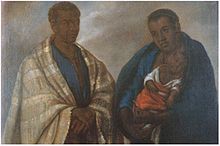
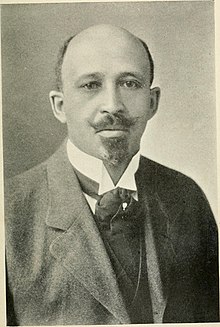

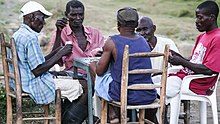


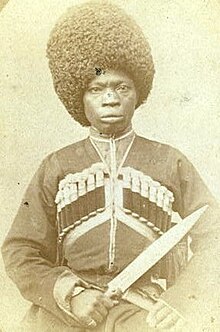


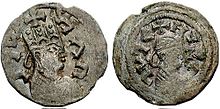
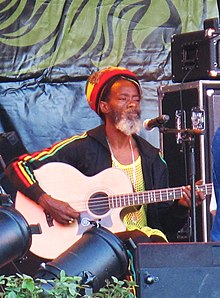
recent African origin of modern humansemigration from AfricaPan-AfricanismUnited States41,104,2005,832,533Brazil20,656,45892,083,2869,925,365500,000France5,000,000Colombia4,944,40012,967,500Saudi Arabia3,600,0003,500,000Mexico2,576,213Jamaica2,510,000United Kingdom2,485,724249,5962,000,000Panama1,258,9151,206,701Canada1,198,5401,140,000Venezuela1,087,4271,034,044Germany1,000,000828,894750,000Portugal645,000Dominican Republic642,0186,179,341Ecuador569,212245,256Netherlands507,000Trinidad and Tobago452,536Belgium358,268Australia326,673Argentina302,936Barbados270,853Uruguay255,074Sweden250,881Pakistan250,000Puerto Rico228,711Guyana225,860Suriname200,406195,809HaitianNorway149,502Grenada108,700Turkey100,000Finland70,592Jordan60,000Russia50,000Costa Rica45,228289,209Guatemala27,64719,52919,514ParaguayEnglishAmericanCaribbeanFrenchCanadianHaitian CreoleSpanishPortuguesePapiamentoPalenqueroAfrican languagesChristianityTraditional African religionsAfro-American religionsAfricanspeople from AfricaCentral AfricansenslavedAtlantic slave tradeAfricanJewish diasporaemigrationAfrican Unionhaplogroup LgeneticArab Slave TradeSlavery in AfricaNorth AmericaSouth AmericaEuropeAtlanticTrans-Saharan